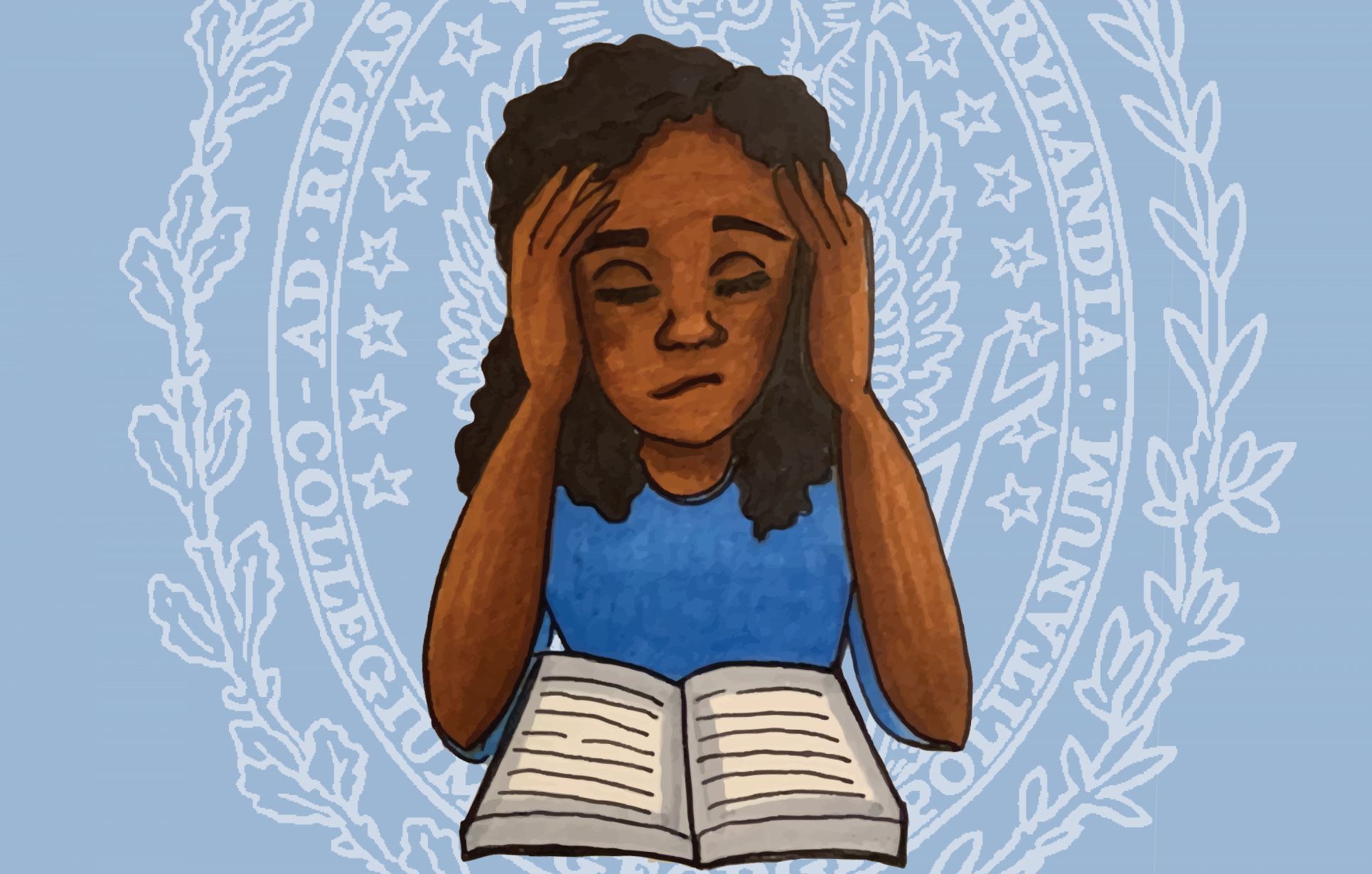I opened the email the second I got the notification.
Back in early July, Georgetown released its long-awaited Fall 2020 continuity plan. After combing through long, paragraphed logistics and bulleted lists, I was left with my key takeaway: I would not be returning to campus for the upcoming semester. I wasn’t surprised, though—I had been preparing for this to be the decision for months. So, when it was officially announced, I was content to close the email and move on.
That is, until I saw the end of the email.
In true Georgetown fashion, the announcement email closed with a declaration of the university’s commitment to an “exceptional education,” one that would be “guided by cura personalis.”
Cura personalis—care of the whole person—is a phrase that I have come to find incredibly frustrating throughout my two years on the Hilltop. In the Ignatian tradition, the phrase serves as a reminder that all aspects of the self deserve equal attention. At Georgetown, though, this definition has become diluted. While I think the concept of cura personalis is fascinating, it’s obvious that Georgetown’s execution of this particular Jesuit value is a façade. In reality, cura personalis is simply a hollow representation of something that Georgetown will never let its students achieve.
For one, when Georgetown students typically hear cura personalis, it is attached to notions of self-care.
At Georgetown, self-care is a buzzword that graces bulletin boards in dorms and the final pages of syllabi, reminding us to indulge in short-term distractions. It always hangs over our heads—it follows us between classes, meetings, and late-night library trips. Yet despite its ubiquity, more often than not, it is something ignored; we tell ourselves that we will get around to it eventually.
Except, on a college campus, “eventually” never comes. Because there are always more papers and more exams, more meetings to attend and more classes to sleep through. Internally, we all know that self-care is something we need to make time for. But because we have normalized operating in a constant state of stress, self-care is something we do not prioritize.
Ironically, a large factor in students’ abstinence from self-care comes from the attitudes reflected in the very faculty and administration who claim to support cura personalis. Too often, professors will assign multiple large projects in the middle of midterm season, only to follow this up with reminders to “Take care of yourselves,” and “Cura personalis!” Just like the papers and the exams, self-care becomes an assignment, one that students almost never get the chance to work on in the midst of rigid deadlines and the unwaveringly swift pace of campus.
These ingenuine declarations of self-care allow professors to deflect responsibility for student well-being. Professors fully have the ability to support students in pursuing true cura personalis, by means of providing more flexibility in the classroom and increasing communication about student needs. Yet they fail to do so consistently, choosing to uphold norms within academia, and, in turn, to rely on these hollow declarations of self-care to pass this responsibility solely to students. Oftentimes, self-care is presented as the only viable solution to distress, as if students must maintain a hyper-individualistic mindset both inside and outside the classroom, rather than address their own role in the larger Georgetown community.
This is particularly harmful in the context of Georgetown’s normalized stress culture, where students compete with one another to see who has lost the most sleep or eaten the least meals that day. Staying up all night in Lau is seen as a trophy. On a campus where good grades and networking opportunities are considered the main pathway to “success,” notions of self-care work in direct opposition to what we have been taught to consider valuable, so it’s only natural that students are less likely to care for their well-being and simply ignore signs of burnout.
There are, of course, many students who utilize campus resources and support spaces such as the Center for Multicultural Equity and Access, the Women’s Center, the LGBTQ Resource Center, and CAPS. While these spaces clearly exist to sustain students, we cannot forget that they are entirely overburdened and underfunded. It is common for students to be put on a weeks-long waitlist to meet with a campus psychologist. In times of financial crisis, support spaces for marginalized students are often the first to face budget cuts. Complete dependence on these resources poses potential harm to both staff and students because it fails to address the roots of student unwellness. Instead, it places the burden of handling the aftermath of student distress on the staff in support spaces.
This is especially important to recognize as many of these resources are run by BIPOC and women; therefore, when we redirect students to these spaces but do not address the issues for which they are seeking help, we are relying on the labor of marginalized identities that already bear the brunt of many harmful campus dynamics. Doing so not only perpetuates the culture of poor student mental health, but places staff members in positions that are potentially taxing to their own mental well-being.
One example of this is the push for more Black clinicians put forth by the Black Survivors Coalition (BSC) as part of the #GeorgetownDoesntCare campaign. Overall, the campaign seeks to increase campus resources for Black women and non-binary survivors of sexual assault. More Black clinicians would represent increased support for Black students on campus. In March, the university hired 13 temporary Black clinicians who are contracted through Dec. 31. There is, however, still a push to hire at least four permanent clinicians by the end of the 2020-2021 academic year.
Hiring permanent Black clinicians is essential to addressing student mental health as a whole. We must remember that improving student well-being means addressing the mental health of all students, particularly those from marginalized communities. It is impossible to properly work towards true cura personalis until Black students have access to adequate mental health resources.
Yet the university must not accept an increase in the diversity of clinicians as an ultimate solution for sustaining the mental health of its Black students. To do so relies on the labor of clinicians without rectifying the taxing situations in which Black students are repeatedly placed. Cura personalis cannot simply be adequate clinical care services, though these are necessary; it must be an effort to create a healthy environment in the first place.
To begin pursuing genuine cura personalis, the Georgetown community should establish community care as its priority.
Instead of solely concentrating on sustaining one’s own mental health, community care focuses on improving the collective well-being, and centering compassion in our engagement with others. This perspective allows us to address how certain dynamics contribute to the mental well-being of the entire community. It shifts the focus of care to be preventative rather than reactionary. Although we have established self-care as a means to achieving cura personalis, the reality is that cura personalis cannot be fulfilled without community care.
Rather than referring students to resources in the aftermath of burnout, a focus on community care forces all members of the Georgetown community to take responsibility for their own stake in supporting well-being on campus in order to avoid the feelings of burnout in the first place. This can take many forms, whether it be simply checking in on our peers or challenging existing stigma surrounding mental health. On an institutional level, this can mean reworking the ways that the Jesuit values influence curriculum requirements and increasing the flexibility of the academic calendar.
While a shift away from our cherished hyper-individualism may seem daunting, we must remember that changes to the foundational structure of the university are already taking place. Professors have redesigned classes to fit virtual models, the administration has rethought the delivery of resources to students, and students have reimagined their entire engagement with the university. In the midst of these great changes to Georgetown’s core functions, we cannot say that changes towards student mental health are impossible. In fact, they are possible now more than ever.
At a time when so many constants in the education system have been reconsidered, now is the time to seriously and genuinely introduce mental well-being as a pillar of our college experience. Our time at Georgetown does not have to be defined by its stress culture. As students, we deserve better than operating in a constant state of anxiety. We deserve to be college students without academia consuming every aspect of our identity. We deserve to genuinely pursue cura personalis, and we must do so as a community.





